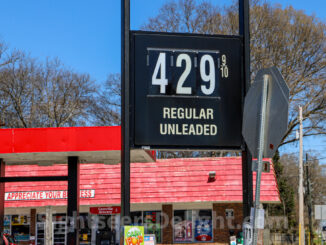(The Center Square) — The nation’s supply chain was stressed after two years of a pandemic, but the threat of a new rail strike laid bare the fragility of the supply chain.
“There was a lot of realization from the pandemic that while our supply chains were efficient, they always helped to get the lowest cost, they weren’t necessarily always as agile in terms of being able to handle these kinds of disruptions,” Tim Kraft, an associate professor of operations and supply chain management at NC State University, told The Center Square.
“The unfortunate part is that I think … folks over the past few years have just still been fighting fires, putting Band-Aids on the supply chain rather than being able to plan long term and try to correct this,” Kraft added. “…This isn’t an easy thing to do. These are large companies and large facilities and large supply chains that are difficult to unravel and reshape and in new, more efficient, more agile way.”
Railroad workers and the nation’s railroad have reached a tentative deal to avoid a nationwide strike. Rail industry officials said a strike could idle more than 7,000 trains daily, potentially leading to product shortages.
The Association of American Railroads said a strike could cost more than $2 billion daily. The association did not immediately comment to The Center Square on what Congress, regulators or the federal government should do to bolster the supply chain and make them less vulnerable to potential disruptions.
“As we all recognize, the entire supply chain is currently struggling due to a myriad of challenges, some self-inflicted and some external, and the U.S. freight rail network is no exception,” Chuck Baker, president of the American Short Line and Regional Railroad Association, said in a letter to congressional leaders.
The supply chain is interconnected. Railroads, for example, don’t run directly to stores; goods often move by ships, trucks and trains.
“A global supply chain is effective because it allows us to go to the source with the most capacity and the cheapest cost of the goods we need,” Kraft said. “The risk though is we’re going to someone else hoping that they will always be there for us and provide that good. If something bad happens, guess what? They close off the borders, keep their goods for themselves and now we have no source of supply or someone starts to monopolize that source of supply.”
Longer term, Kraft said the federal government can’t necessarily come in, and hands-on fix the supply chain. But the feds can make it more attractive for industries to fix the supply chain by incentivizing domestic manufacturing, such as battery manufacturing, and make the costs more palatable for companies.
“I’ve seen people talking about the governments looking at ways we can create extra capacity through other freight [modes] — trucks, air, ports — to offset the right vote at any potential loss in rail capacity,” Kraft said.
“I have a hard time believing that that’s possible — one this quickly but two, rail is 30% of our freight capacity here in the U.S.,” Kraft added. “Trucking is number one at 40%, but trucking is already hurting and still hurting from the pandemic because we’re short truck drivers and trucks, so it’s not like there’s a lot of extra capacity that we could just shift towards the problem.”
This article was published by The Center Square and is republished here with permission. Click here to view the original.





